Your Bedroom Isn’t Just for Furniture: A No-Nonsense Guide to Engineering Better Sleep
For well over a decade, I’ve been obsessed with how our homes affect our well-being. My main focus? The bedroom. It’s the one room where we’re supposed to completely power down, heal, and recover. And I’ve learned that a truly restorative bedroom isn’t about fancy decor—it’s about engineering. It’s a system where light, sound, air, and the surfaces you touch all work together to either help or hurt your sleep.
In this article
So many of us see the bedroom as just a place to put a bed. We buy a mattress, throw on some sheets, and cross our fingers. When sleep is a struggle, we blame stress or our racing minds. And while those things are definitely part of the equation, the room itself is sending your body constant signals. That tiny blue light on your charger, the stuffy air, the mattress that makes your back ache… they’re all telling your body to stay on high alert.
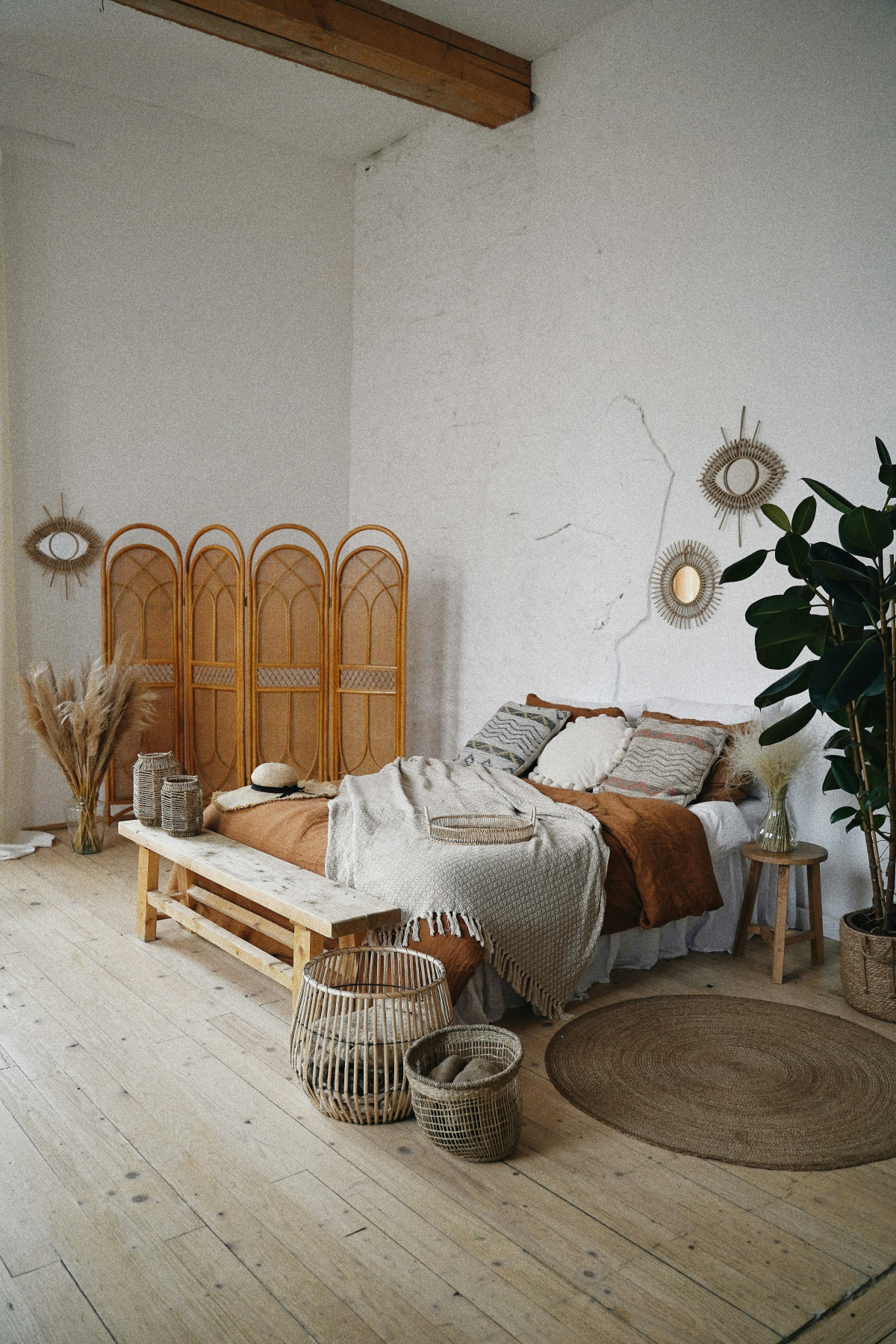
This isn’t just a list of expensive things to buy. It’s a breakdown of the core systems that make or break a sleep space. I’m going to show you how to think like a pro, make smart choices, and build a bedroom that actively helps you rest. Let’s dive in.
The Foundation: Your Bed Is a System, Not a Single Object
First things first: the bed isn’t just a mattress. It’s a whole system—the base, the mattress, and your bedding—and each part dramatically affects the others. Getting this right is honestly the single biggest investment you can make in your sleep. It controls your spinal alignment, pressure points, and how hot or cold you feel all night long.
The Mattress and Base: Getting Support Right
A mattress has two jobs: support (keeping your spine straight) and comfort (cushioning your body). The biggest mistake people make is buying a mattress that’s way too soft. It feels amazing for the first five minutes in the store, but it fails to support your spine over a full night, which is why so many people wake up with back pain.
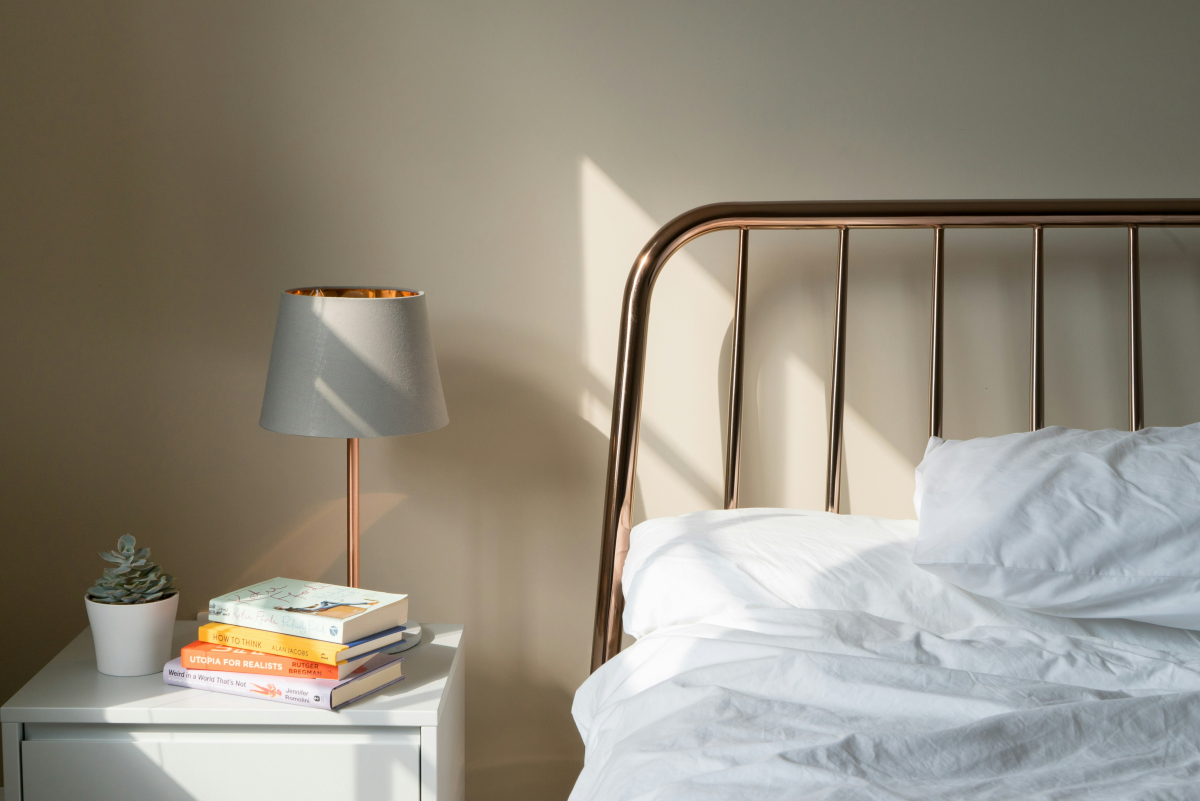
The pros use a few key metrics. For foam, it’s a firmness rating called Indentation Load Deflection (ILD). For innersprings, it’s coil gauge. But let’s make that practical. What do you actually need?
- If you’re a side sleeper or weigh under 150 lbs: You need a softer, more contouring surface to let your shoulder and hip sink in. Look for something in the 14-20 ILD range, often labeled “plush” or “medium-soft.”
- If you’re a back sleeper or weigh between 150-200 lbs: A medium-firm mattress is usually the sweet spot. This would be in the 21-25 ILD range and helps support your hips without causing pressure points.
- If you’re a stomach sleeper or weigh over 200 lbs: You need a firm surface to prevent your hips from sinking too low and arching your back. Aim for an ILD of 25-35, typically labeled “firm” or “luxury firm.”
When you’re mattress shopping, please, lie down for at least 15 minutes in your usual sleeping position. Don’t just sit on the edge. And pay close attention to the base! Putting a brand-new, $1,500 mattress on an old, sagging box spring is like putting premium tires on a car with a bent axle. It just won’t work. Slats on a platform bed should be no more than 3 inches apart. Using the wrong base can even void your mattress warranty, so always check the fine print.
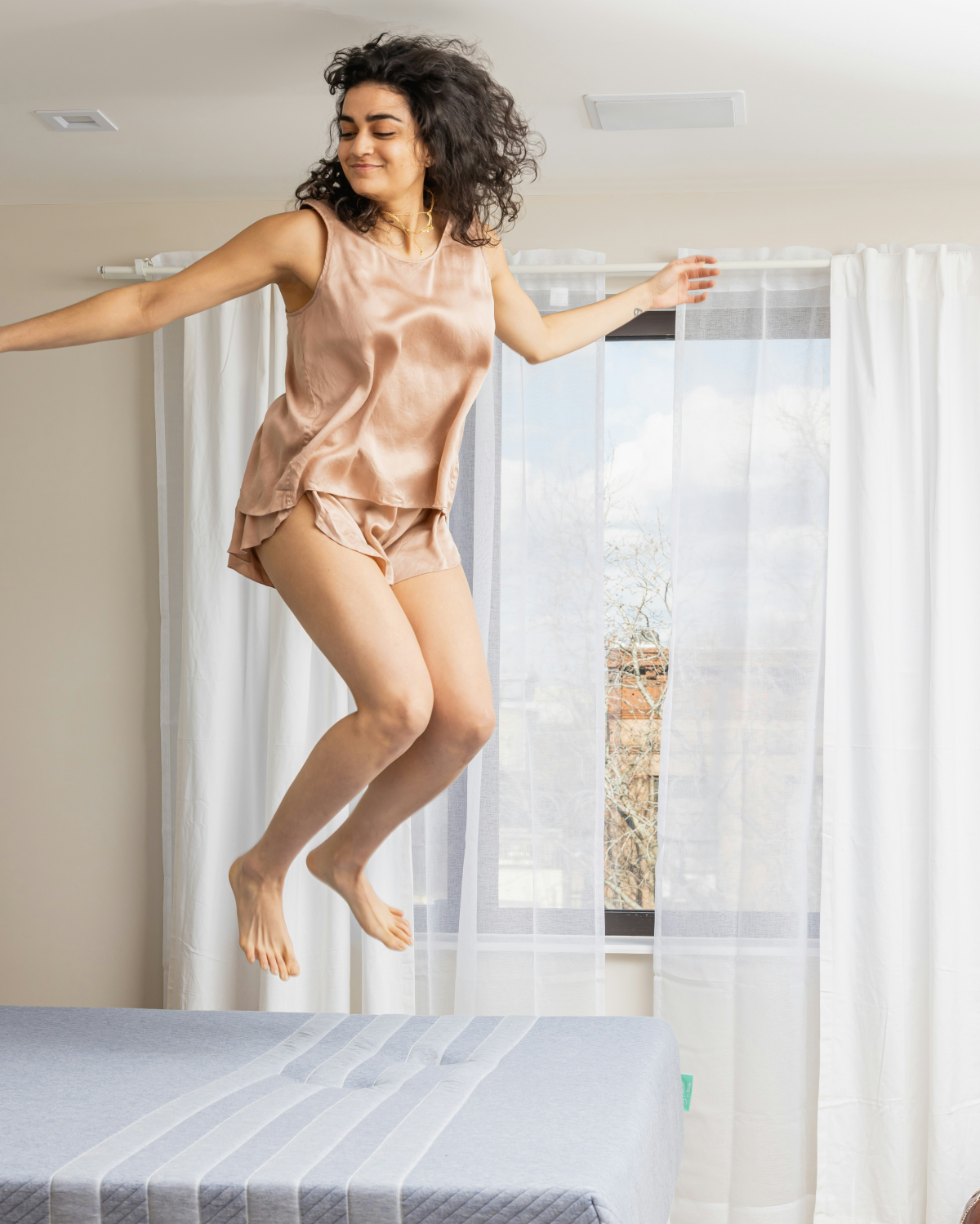
Oh yeah, I once helped a client who had spent a fortune on a luxury memory foam mattress but was still in agony every morning. I went to their house and found it sitting on a 20-year-old box spring that had totally lost its structure. It was creating a hammock effect. We swapped it for a simple $250 solid platform base from an online retailer, and their pain was gone in a week. The base matters!
Pillows: The Most Underrated Piece of Gear
A pillow’s only job is to fill the space between your head and the mattress, keeping your neck straight. Most sleep-related neck pain comes from using a pillow with the wrong height, or “loft.”
- Side Sleepers: You need a thicker, firmer pillow to fill that big gap between your ear and shoulder.
- Back Sleepers: Look for a medium-loft pillow. Your chin shouldn’t be tucked into your chest.
- Stomach Sleepers: This is a tough one for your neck. Honestly, the best bet is a super thin pillow or no pillow at all. A small, flat one under your hips can also help your lower back.
Quick challenge: Go grab your main pillow right now. Fold it in half. Does it spring back, or does it stay folded like a sad taco? If it stays folded, it’s dead. Time to get a new one. No excuses! A decent polyester-fill pillow can be found for $20-$40, but it might only last a year or so. A good memory foam or latex pillow might cost more, say $60-$120, but it can provide consistent support for years.
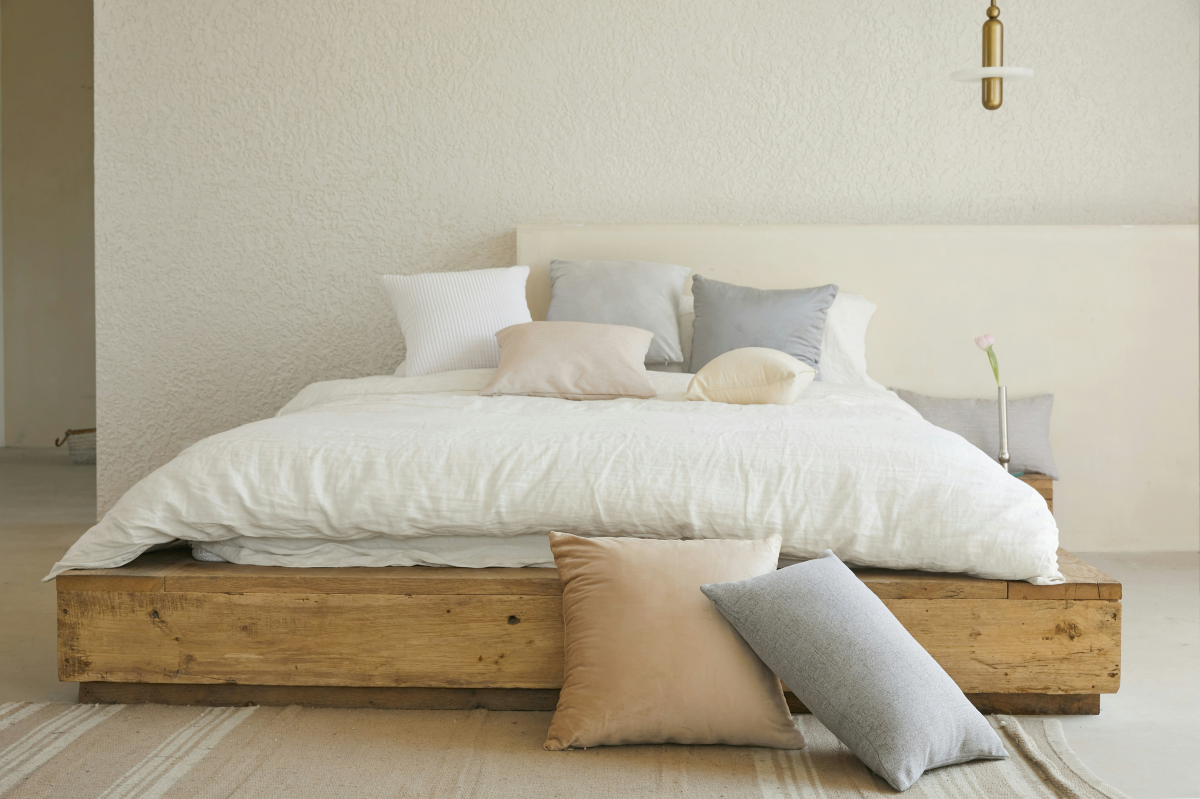
Bed Linens: It’s About the Weave, Not Just Thread Count
The stuff touching your skin all night is huge for temperature regulation. Marketers love to scream about thread count, but the material and weave are way more important.
For the weave, you’ve generally got two main choices. Percale is a simple grid-like weave that feels crisp, cool, and matte—think of a classic, high-quality hotel sheet. It’s super breathable and amazing for hot sleepers. A good set can run you anywhere from $60 to $120. Then there’s Sateen, which has a different weave that makes it feel silky, smooth, and a bit heavier. It drapes beautifully and has a slight sheen, but it’s also warmer, making it better for people who run cold or just love that luxury feel. Expect to pay a bit more, maybe $80 to $180.
Material-wise, long-staple cottons (like Pima or Egyptian) are fantastic because the long fibers make them soft and durable. But if you’re a really hot sleeper or live in a humid place, you might want to look at Linen. It’s incredibly breathable and gets softer with every wash, though it has a more relaxed, wrinkly look and can be pricey, often starting around $150 and going way up. Another great option is Tencel, a fiber made from wood pulp that’s buttery soft and amazing at wicking moisture. A good rule of thumb: look for the OEKO-TEX Standard 100 label. It’s a certification that ensures the fabric is free of harmful chemicals—a must for anyone, but especially those with sensitive skin.
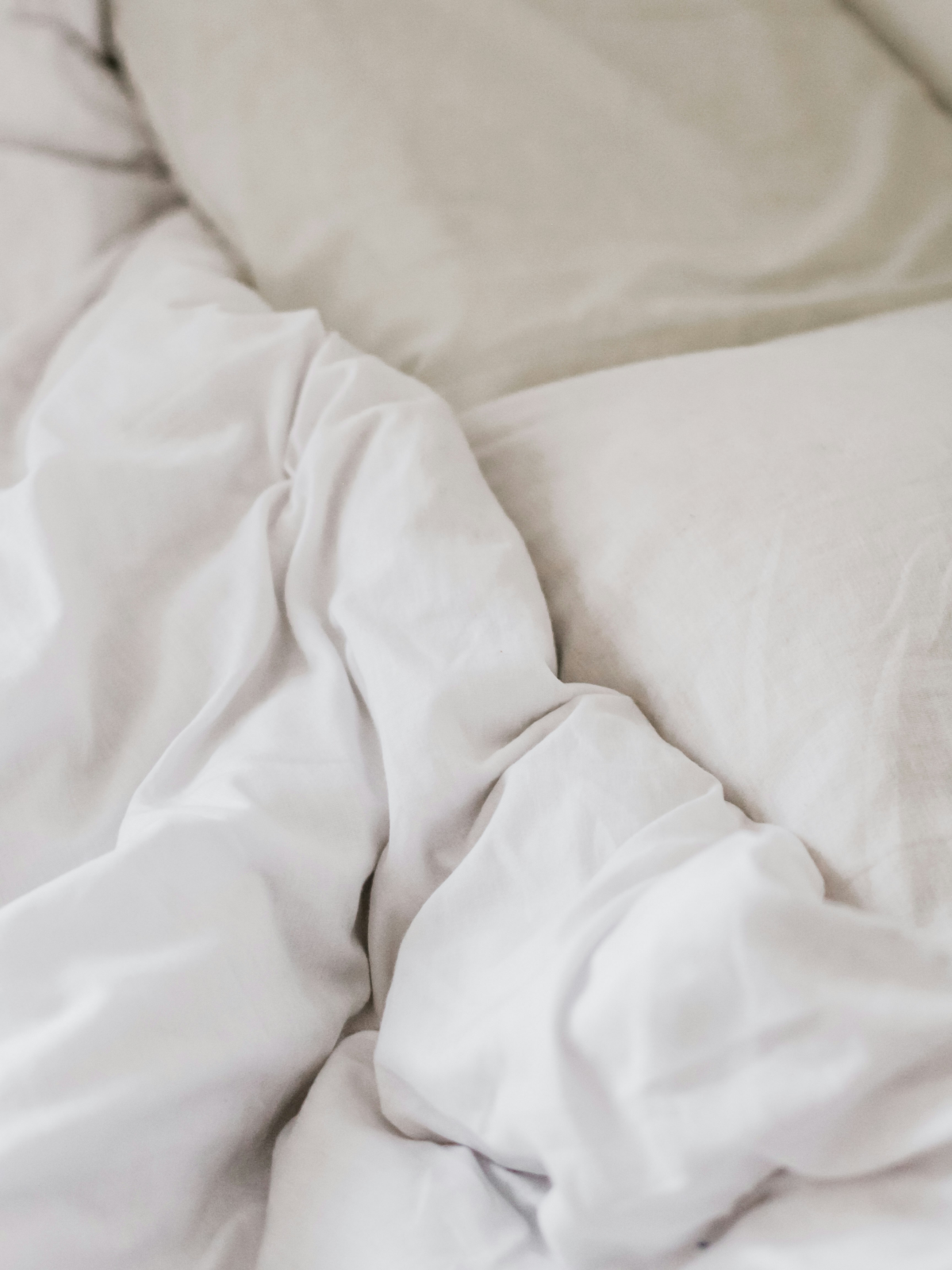
Mastering the Atmosphere: Light & Sound
Your brain is wired to respond to light and sound. Even tiny amounts can mess up your sleep cycles. Getting total control over these two things is where you get the biggest bang for your buck.
Light: The On/Off Switch for Your Brain
Your body has an internal clock, and its main cue is light. Blue light, in particular—the kind that screams from our phones and screens—tells your brain to stop producing melatonin, the hormone that makes you sleepy. One quick glance at your phone in the middle of the night can literally halt the process and leave you staring at the ceiling.
Biggest Bang for Your Buck Tip: If you do only ONE thing after reading this, get your room as dark as possible. A $20 sleep mask can be a game-changer. For a more permanent fix, invest in true blackout curtains, which will run you about $60-$100 per window. Make sure they are
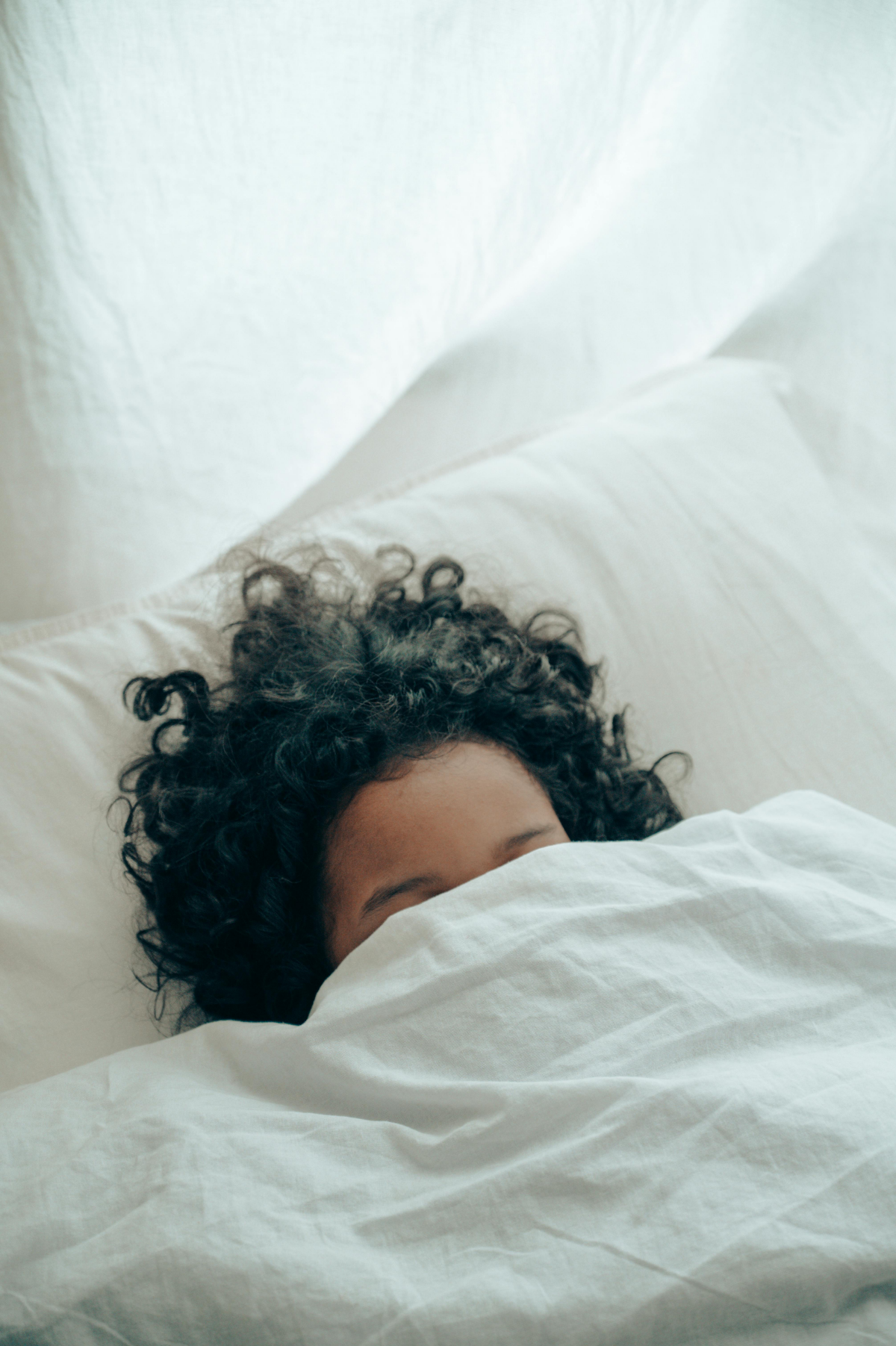
Galerie d’inspiration
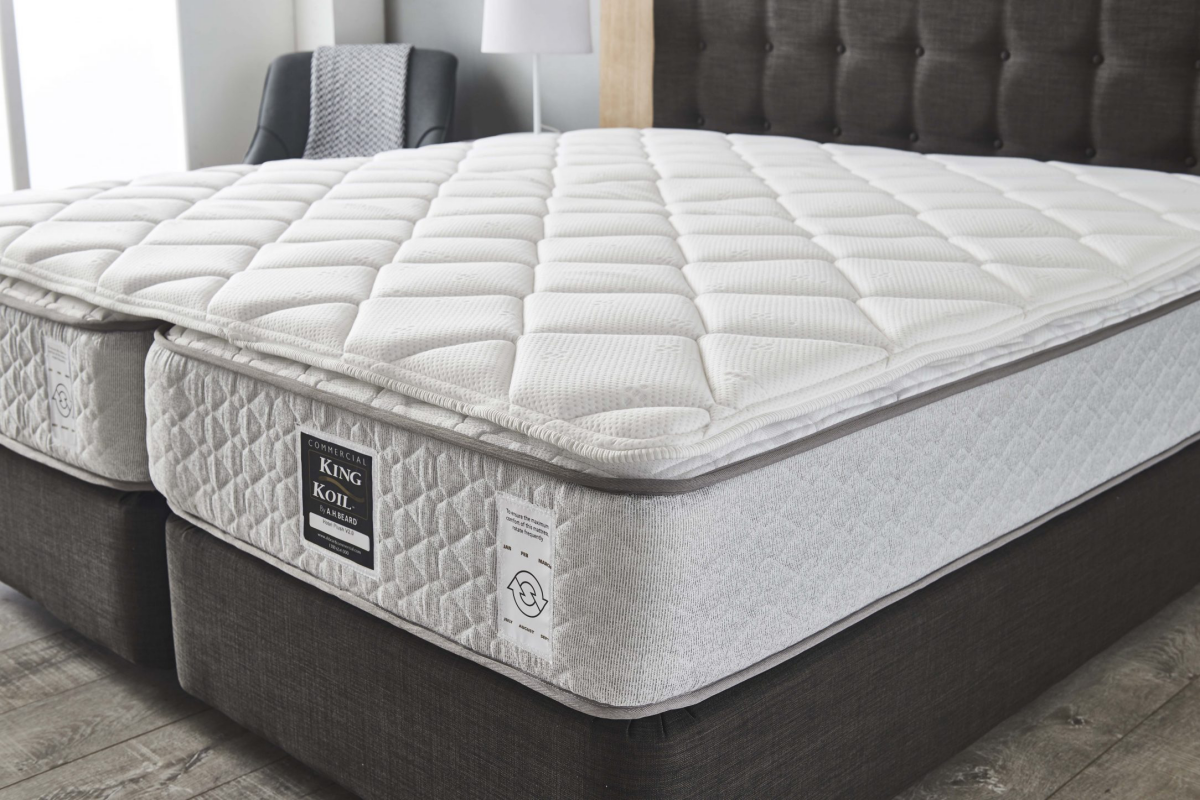
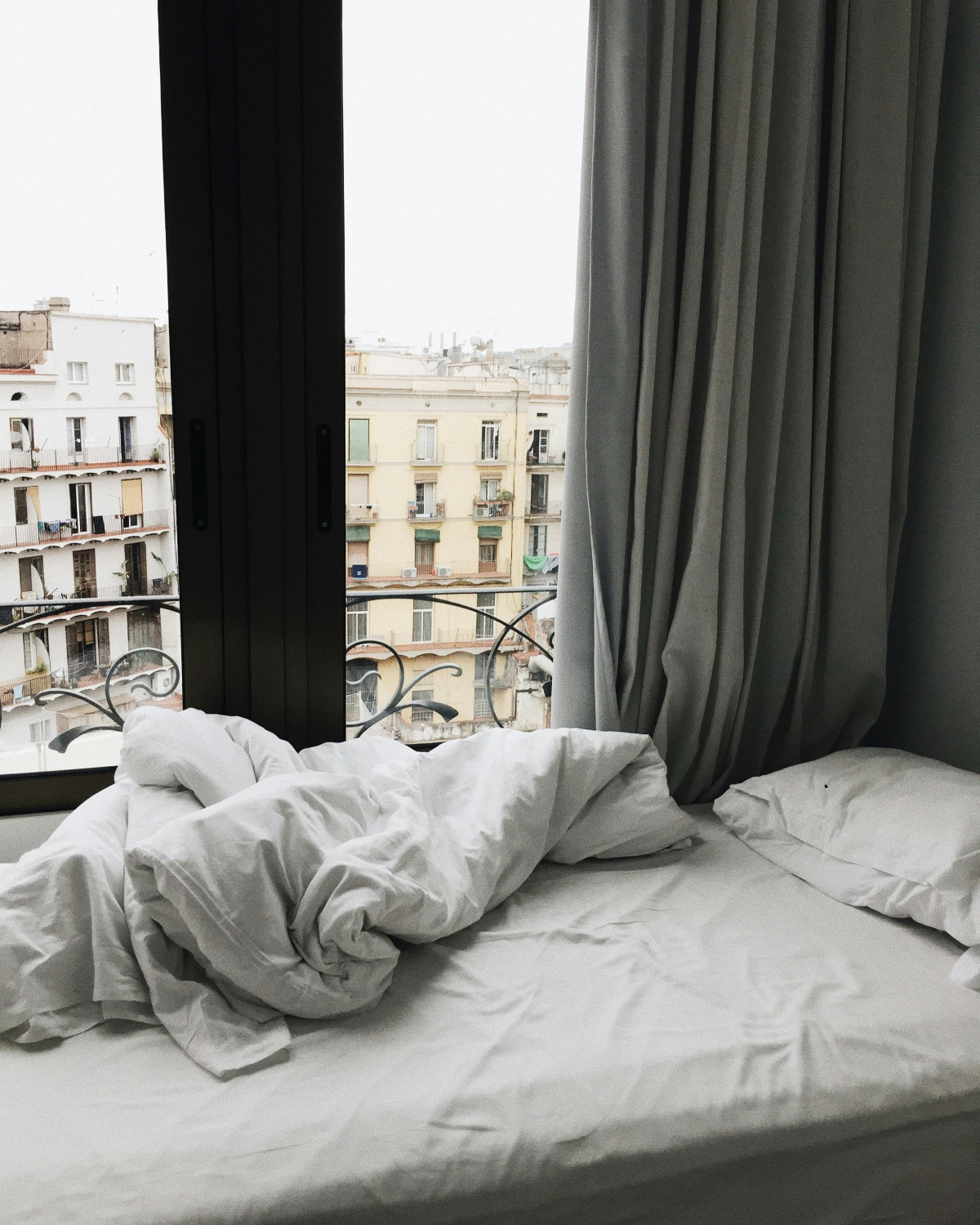
The average person spends about a third of their life in bed. Yet, the pillow—which supports the head and cervical spine for 8 hours a night—is often an afterthought.
This statistic is a powerful reminder that your pillow is not just a cushion; it’s a critical piece of sleep equipment. A pillow that’s too high or too low throws your neck out of alignment with your spine, creating tension that can lead to stiffness, headaches, and disrupted sleep, completely negating the benefits of a perfect mattress.
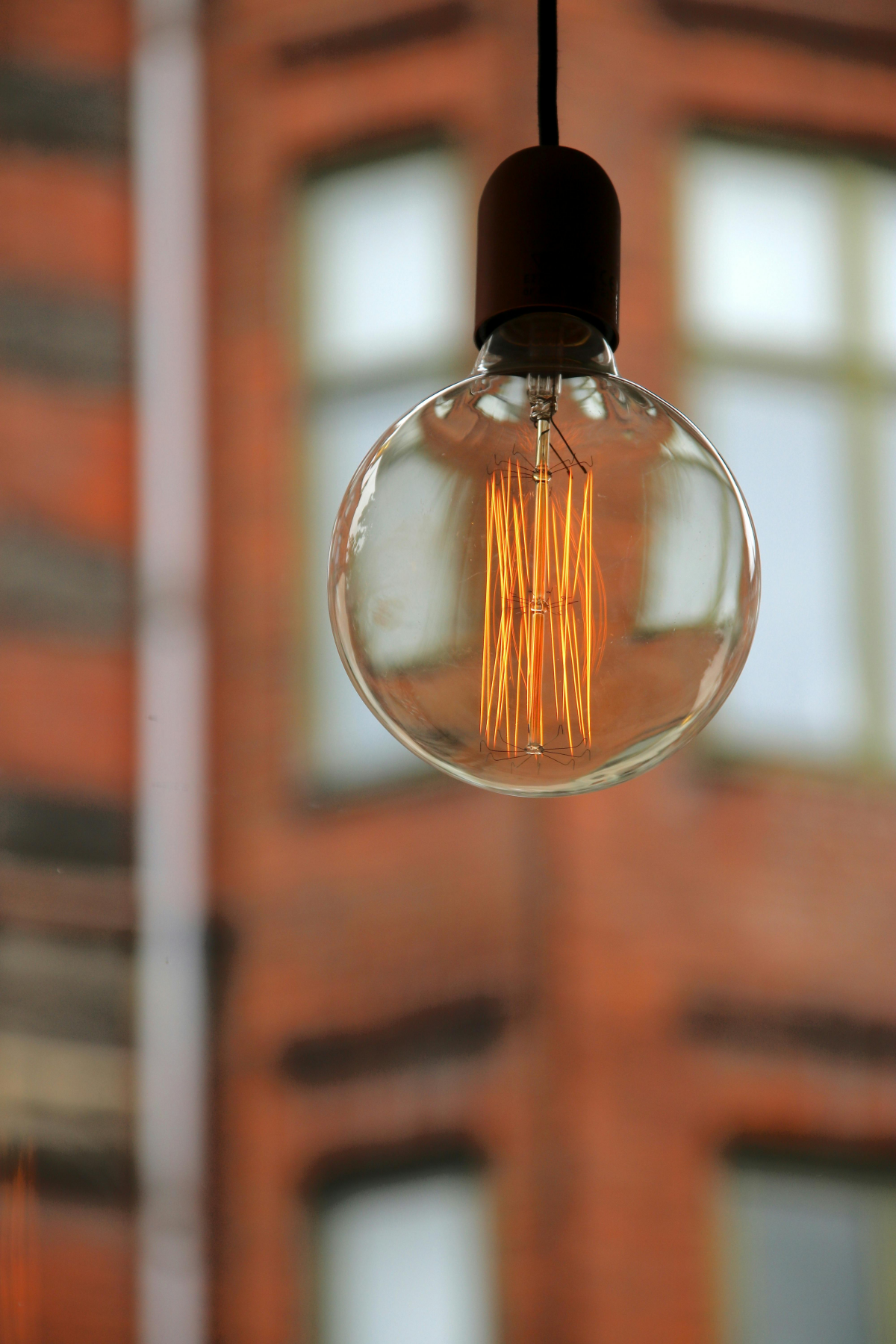
What’s the ideal color temperature for bedside lighting?
Think sunset, not sterile office. The light your brain sees in the evening directly impacts melatonin production. For bedside lamps, choose bulbs with a color temperature of 2700K or less. These emit a warm, amber, or reddish glow that mimics dusk and signals to your body that it’s time to wind down. Smart bulbs like the Philips Hue can even be programmed to automatically shift from cool to warm light as the evening progresses.
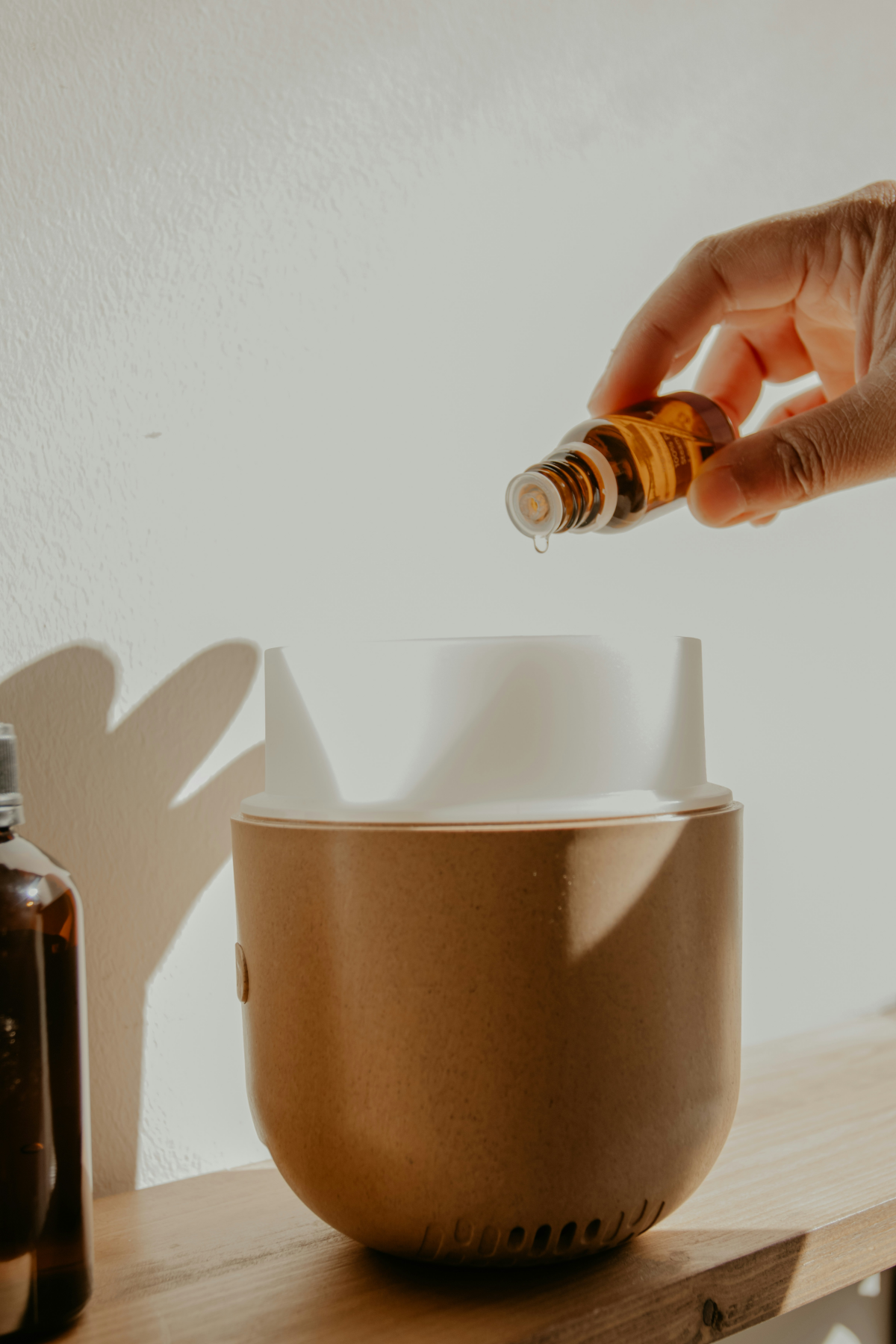
The Wrong Fabric: Many people focus only on thread count, but the material and weave are what truly define your sleep experience. A high thread count in a non-breathable polyester can trap heat and moisture, leaving you clammy.
The Right Fabric: For a cool, crisp hotel feel, choose cotton percale. For silky smoothness and a slight sheen, go for sateen. If you’re a hot sleeper or want a relaxed, earthy texture, nothing beats the breathability of linen from brands like Parachute or Brooklinen.
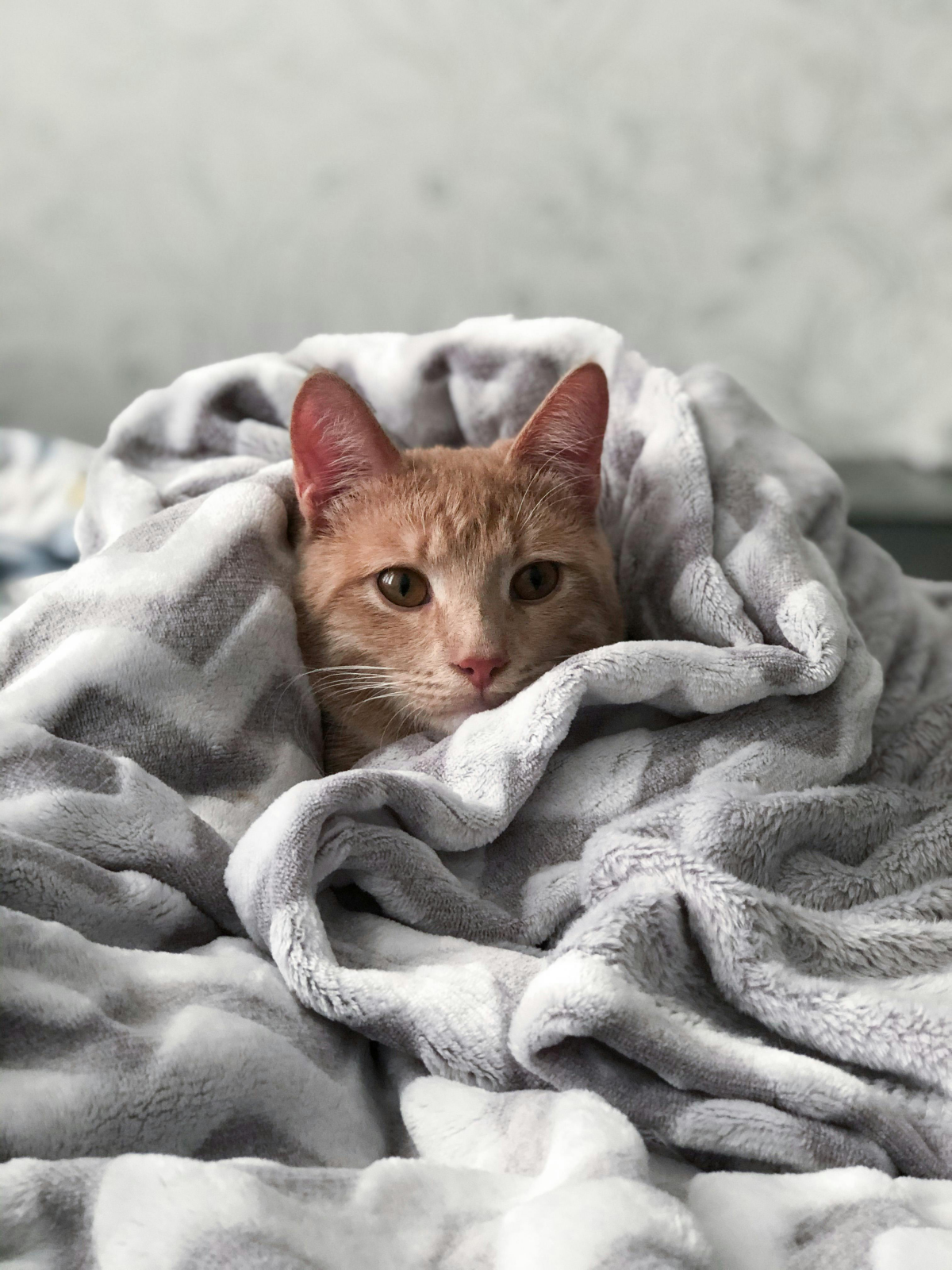
Your bedroom’s air can be up to five times more polluted than outdoor air, filled with allergens, dust, and VOCs from furniture and paint. A high-quality air purifier with a true HEPA filter isn’t a luxury; it’s an essential tool for engineering clean air. By removing airborne irritants, models like the Levoit Core 300S can reduce nighttime congestion and allergic reactions, allowing for deeper, less interrupted breathing all night long.
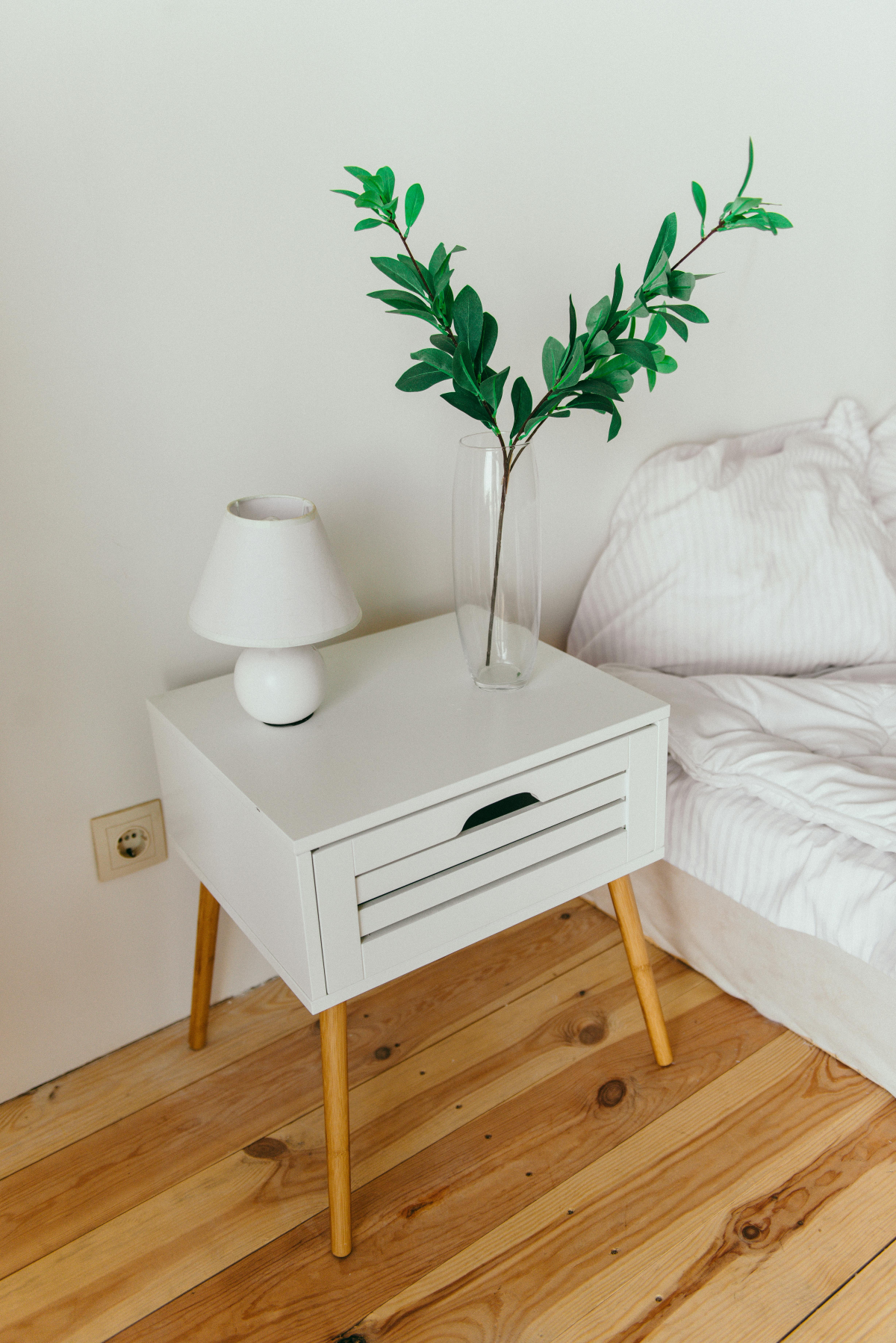
- Create a barrier against street noise and light.
- Improve your room’s thermal insulation, keeping it cooler in summer and warmer in winter.
- Absorb internal echoes, making the space feel calmer.
The secret? Floor-to-ceiling blackout curtains. Choose a thick, heavy fabric like velvet or a tightly woven thermal material. Mounting the rod high and wide—extending well beyond the window frame—maximizes their light-blocking and sound-dampening effects.
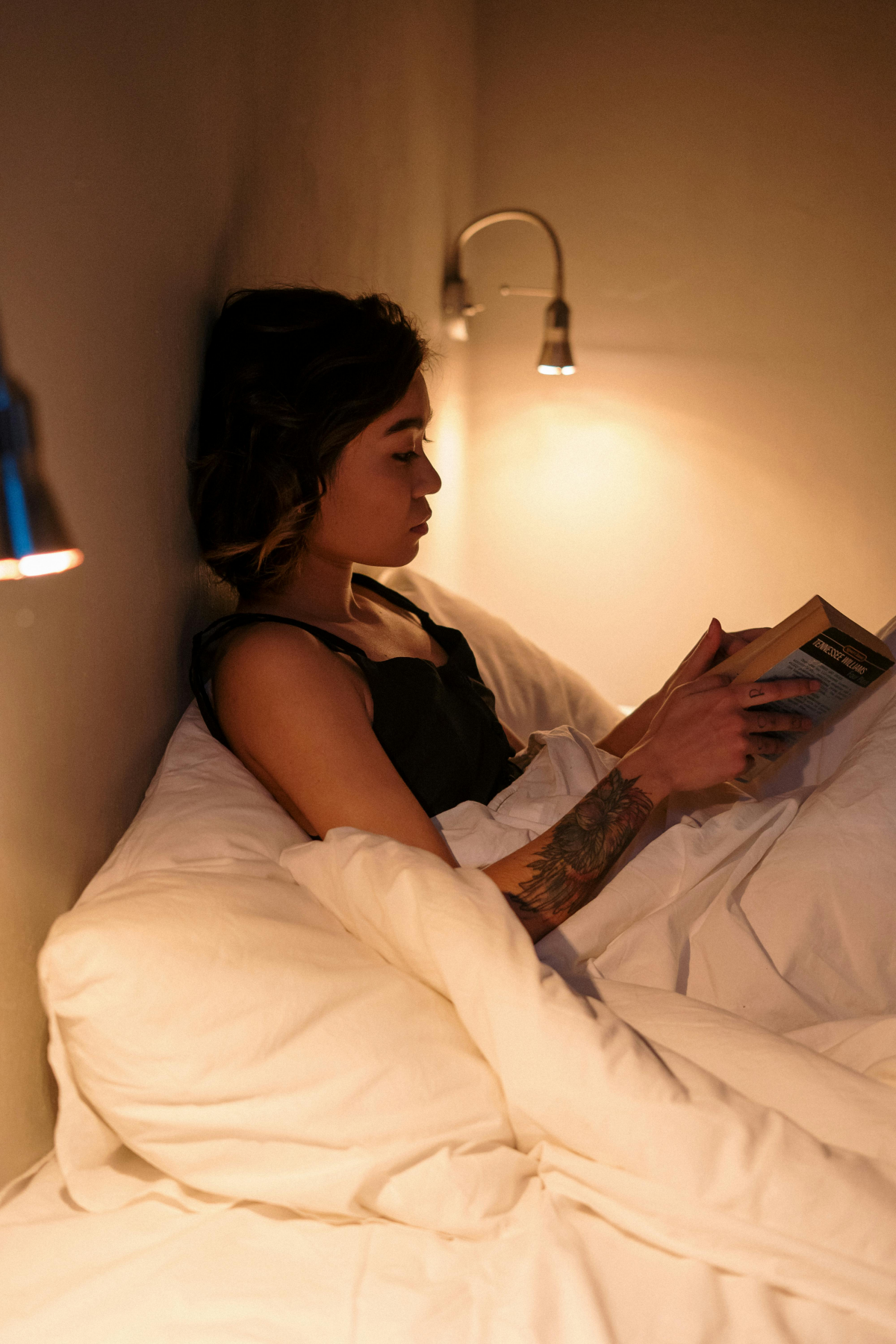
A 2012 study found that even moderate ambient noise levels can suppress deep and REM sleep, leading to next-day fatigue and impaired cognitive function.

Don’t just mask noise; manage it. There are two primary approaches for dealing with sound disruptions.
- Sound Masking: A white noise machine, like the classic Marpac Dohm, creates a constant, soothing frequency (a ‘shhhh’ sound) that makes sudden noises like a door slamming or a dog barking less jarring to your sleeping brain.
- Sound Blocking: High-fidelity earplugs, such as Loop Quiet, are designed to physically block external sounds. They are ideal for city dwellers or those with snoring partners, creating a near-silent personal environment.

Important: Your mattress needs to breathe. Placing a high-quality mattress directly on the floor or on a solid, unventilated platform base can trap moisture and heat. This not only creates an uncomfortable, sweaty sleep environment but can also lead to mold and mildew growth within the mattress layers over time. A slatted base is almost always the superior choice for airflow and mattress longevity.
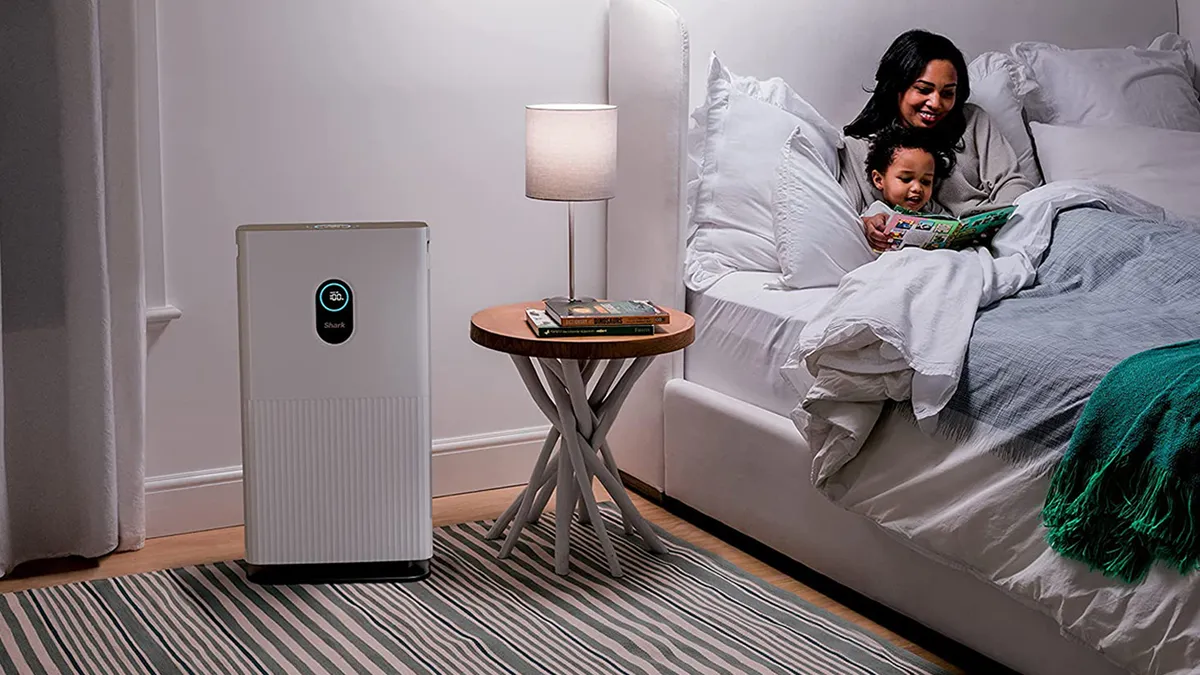
The ‘bedding system’ extends beyond sheets. Consider a mattress protector. Not just for spills, a good quality protector from a brand like Saatva or Purple can also create a barrier against dust mites and allergens, which are major triggers for nighttime allergies. Opt for one with a breathable yet waterproof top layer (like a Tencel-blend) to ensure it doesn’t trap heat.
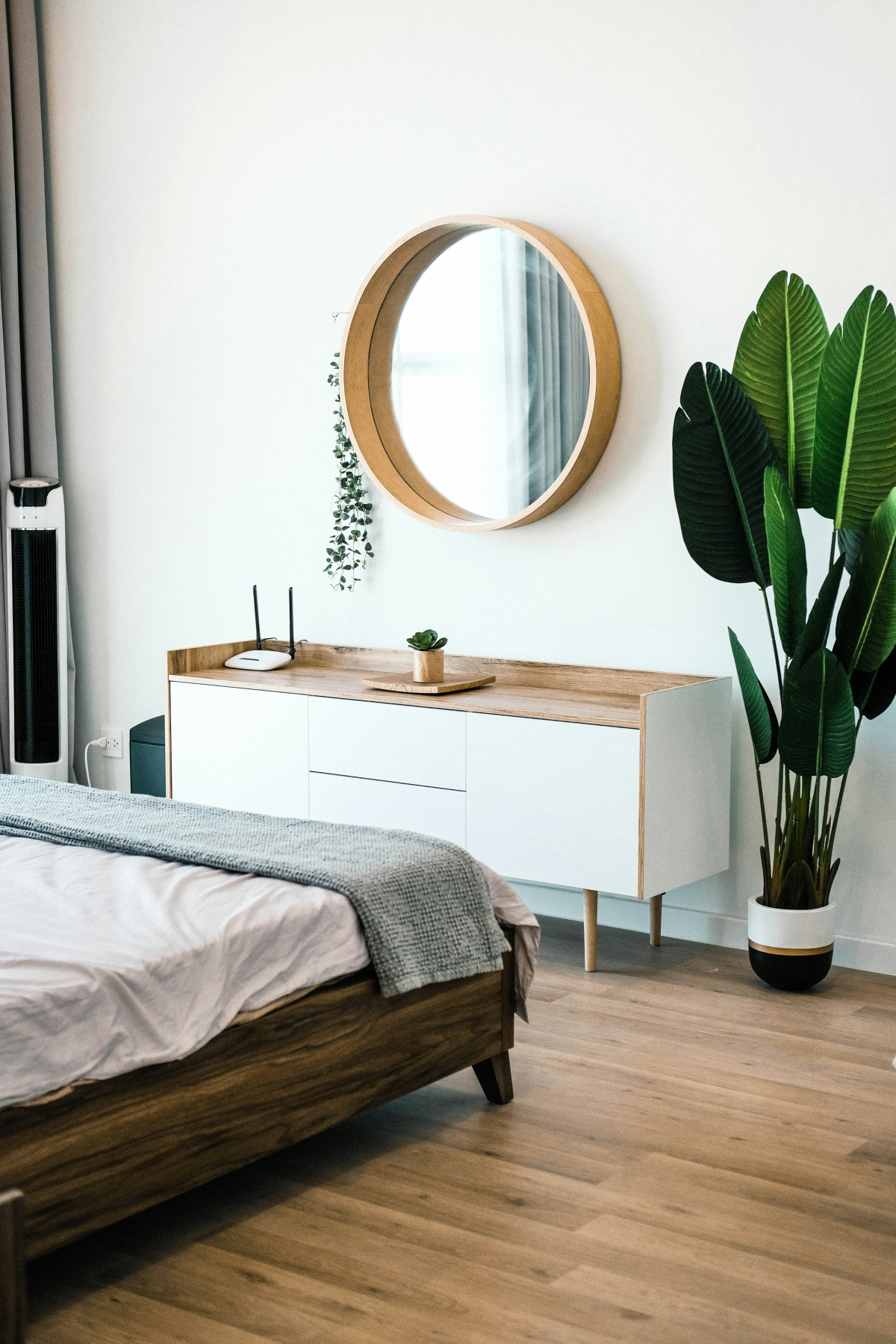
- Rotate it 180 degrees every 3-6 months. This ensures even wear and prevents permanent body indentations from forming.
- Use a supportive base. Ensure your bed frame’s slats are no more than 3 inches apart to prevent sagging.
- Keep it clean. Vacuum your mattress surface with an upholstery attachment every few months to remove dust mites and dead skin cells.
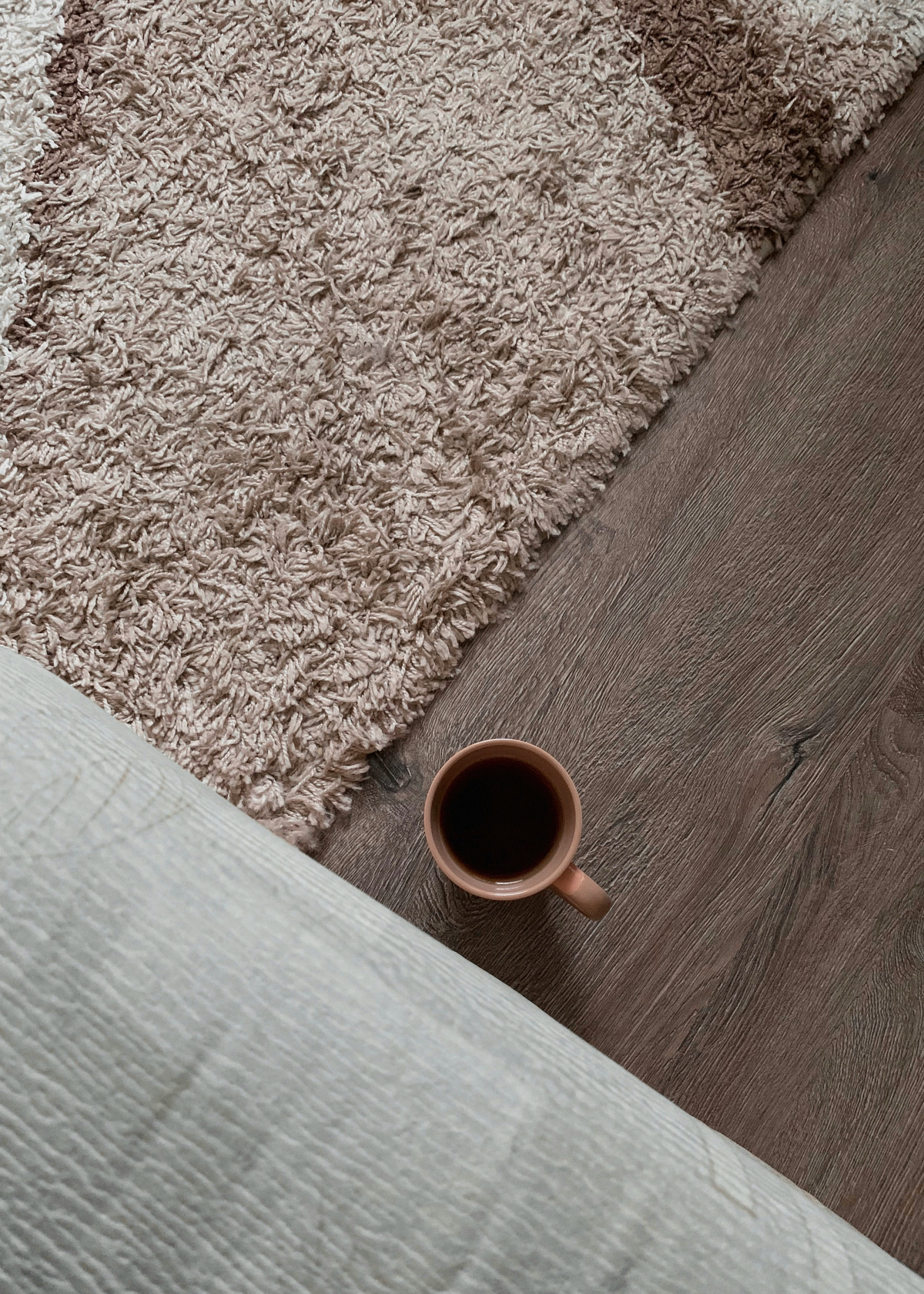
That tiny blue or green LED on your phone charger, TV, or power strip? It’s more disruptive than you think. This type of light is particularly effective at halting melatonin production. The fix is simple and cheap: use a small piece of black electrical tape or invest in a pack of Light Dims, which are specifically designed to cover and dim these distracting indicator lights without blocking them completely.
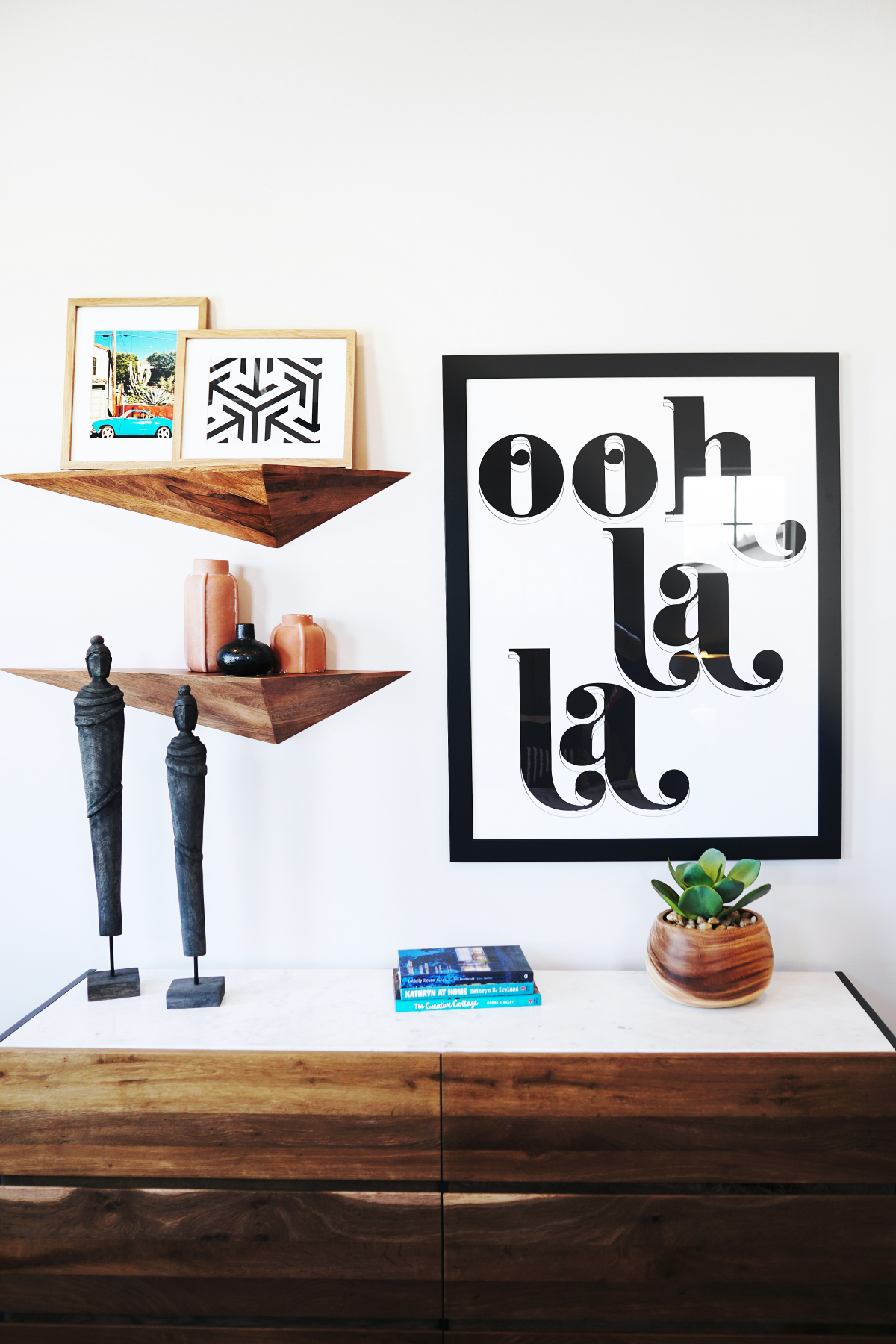
According to sleep scientists, the ideal temperature for sleep is surprisingly cool: between 60 and 67 degrees Fahrenheit (15-19°C).
Your body’s core temperature naturally drops to initiate sleep. A cool room facilitates this process. If your room is too warm, your body has to work harder to regulate its temperature, which can lead to restlessness and more frequent awakenings. Consider a smart thermostat or simply set your A/C to a cooler temperature an hour before bed.
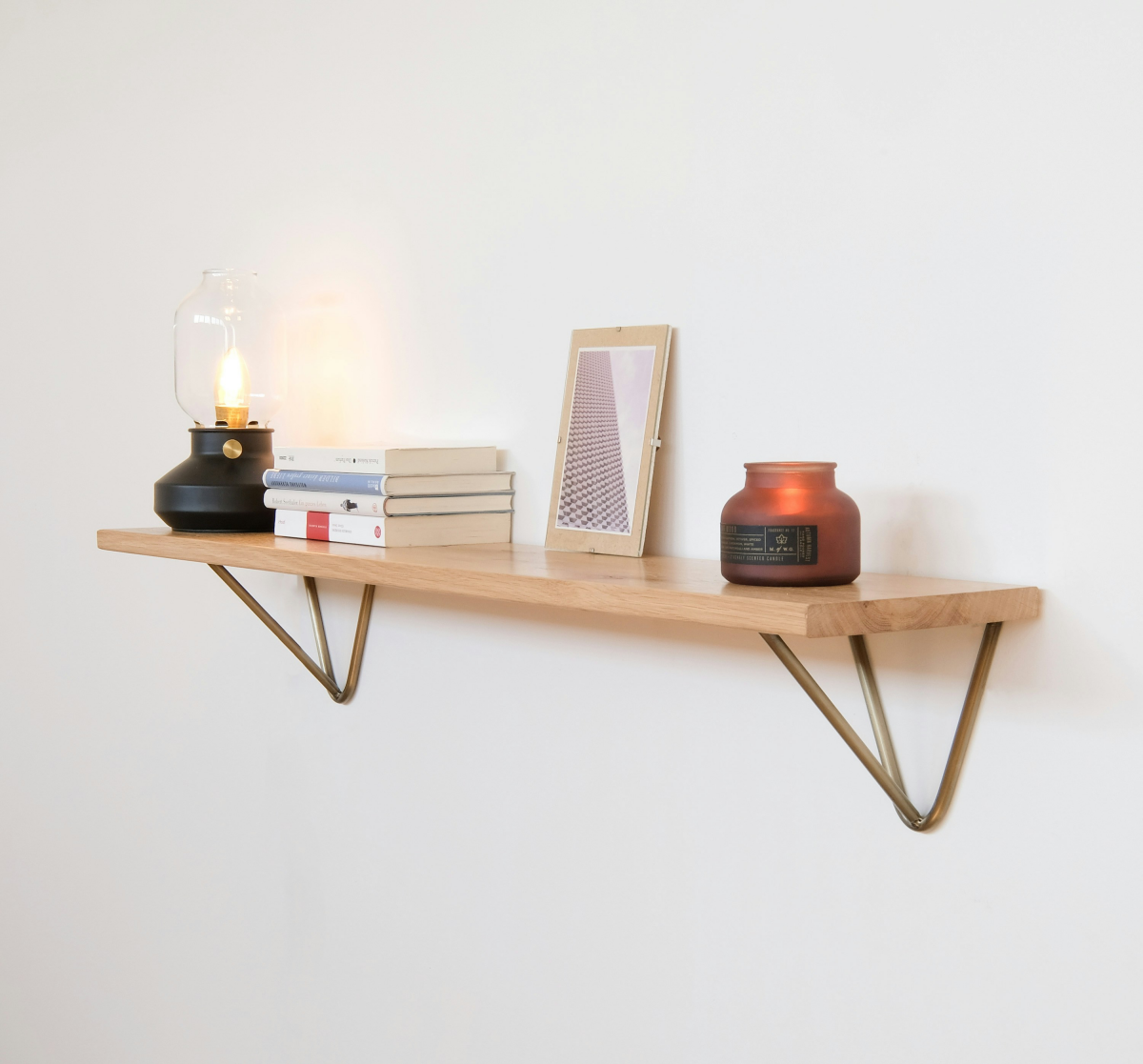
Can a scent really improve my sleep?
Yes, if used correctly. Scent is directly linked to the brain’s emotional centers. A calming scent can become a powerful conditioned trigger for sleep. Use an ultrasonic diffuser with a few drops of lavender or chamomile essential oil for 30 minutes before you get into bed. The key is subtlety; the goal is a gentle hint in the air, not an overpowering perfume that could become an irritant overnight.
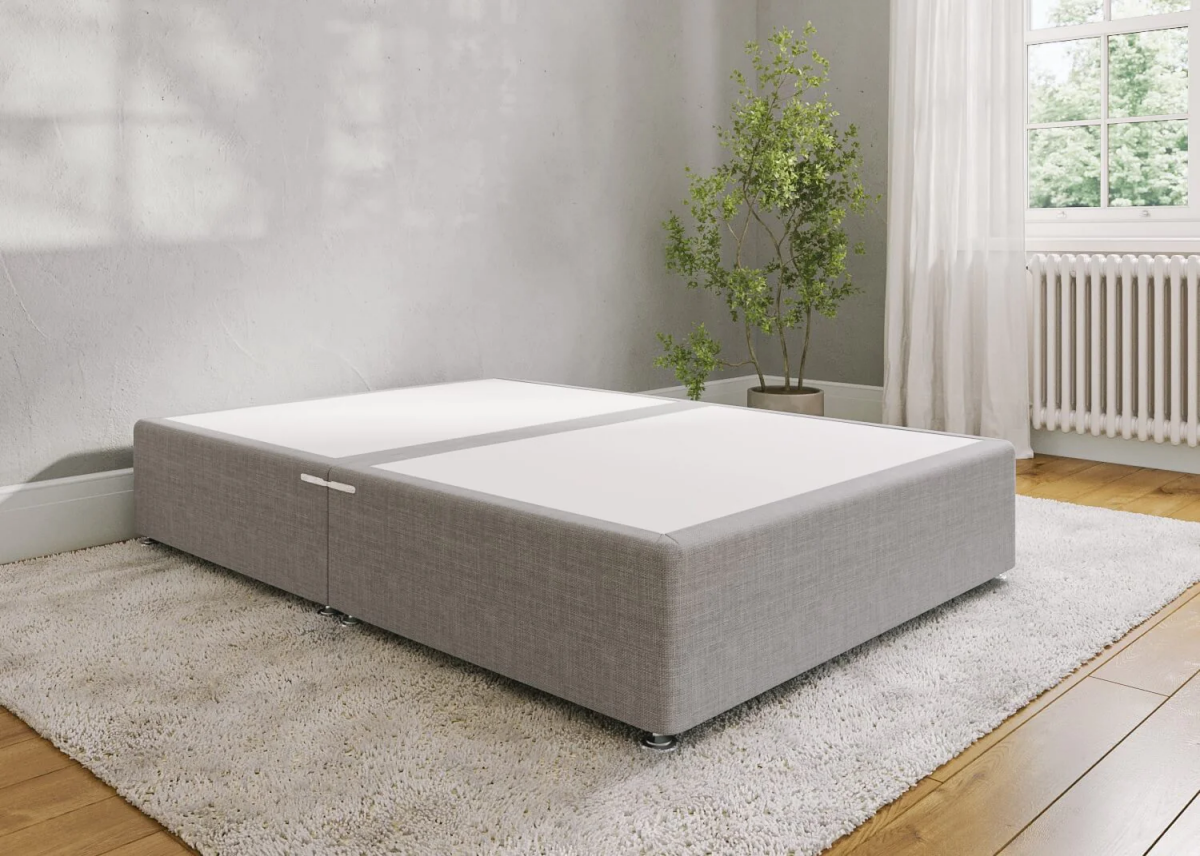
The Japanese concept of a dedicated sleep space, or ‘shitsu,’ emphasizes minimalism. By removing anything not directly related to rest—desks, televisions, exercise equipment, and general clutter—you send a clear psychological signal to your brain. This room has one purpose: sleep. This mental boundary can be just as powerful as physical ones like blackout curtains.
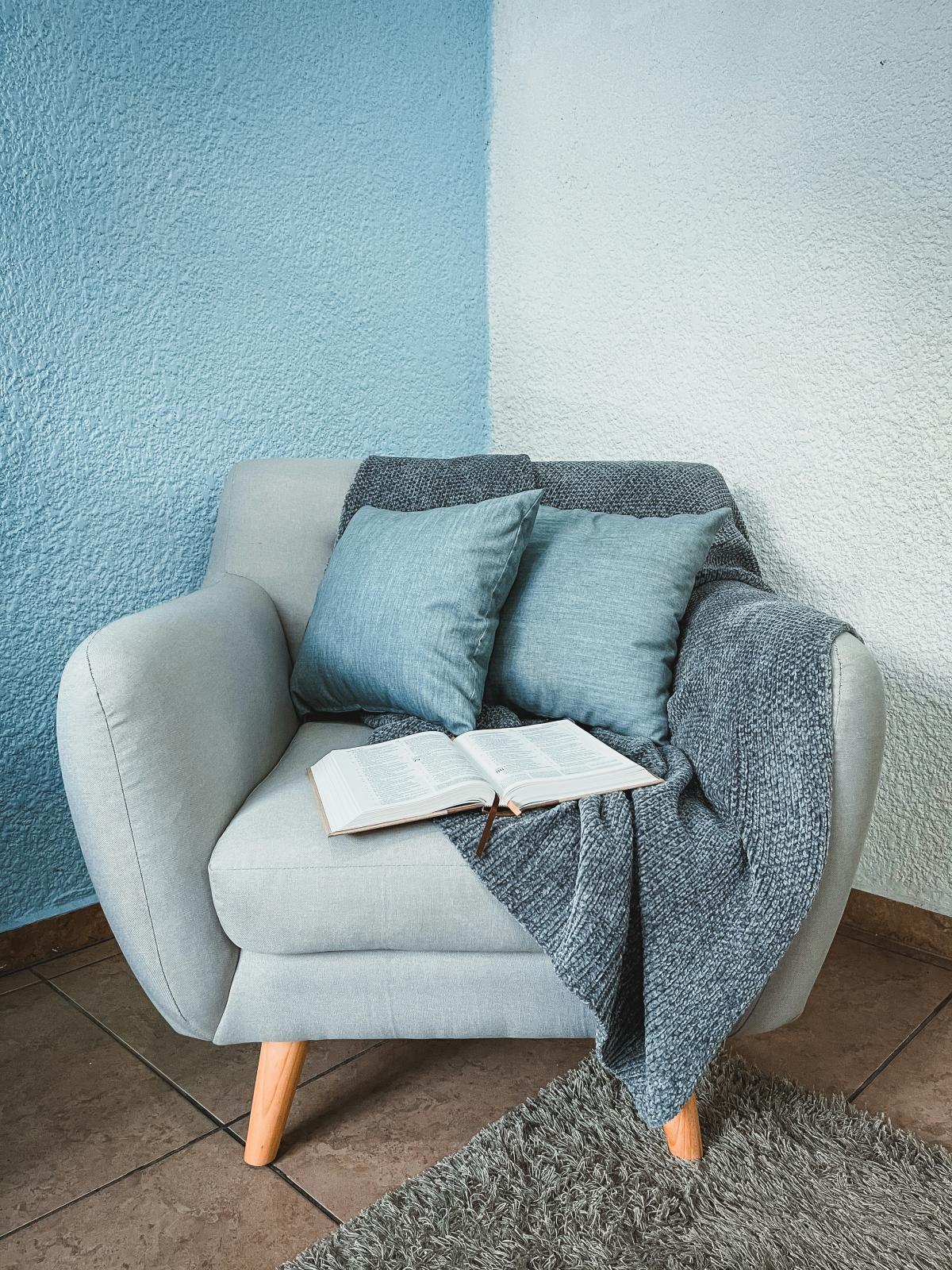
Wool Mattress Topper: Naturally regulates temperature, wicking away moisture to keep you cool in summer and warm in winter. It’s also naturally resistant to dust mites.
Memory Foam Topper: Excellent for pressure relief and motion isolation. Ideal if you have sore joints or a partner who tosses and turns. Look for gel-infused versions to mitigate heat retention.
The best choice depends on your primary goal: temperature control (wool) or body-contouring pressure relief (foam).

- They promote deep relaxation and can ease muscle tension before sleep.
- They provide a focused, screen-free activity to quiet a racing mind.
- They can help regulate body temperature for better sleep onset.
The secret? A 20-minute soak in an Epsom salt bath one to two hours before bed. The magnesium sulfate helps relax muscles, and the subsequent drop in body temperature after you get out mimics the natural cool-down process your body undergoes to initiate sleep.
Beyond the tech, think about texture. The tactile sensations in your room contribute to the feeling of sanctuary. The weight of a heavy knit blanket, the smoothness of a silk pillowcase that’s gentle on skin and hair, the softness of a sheepskin rug underfoot when you get out of bed—these sensory details create an environment of comfort and calm that actively invites rest.










